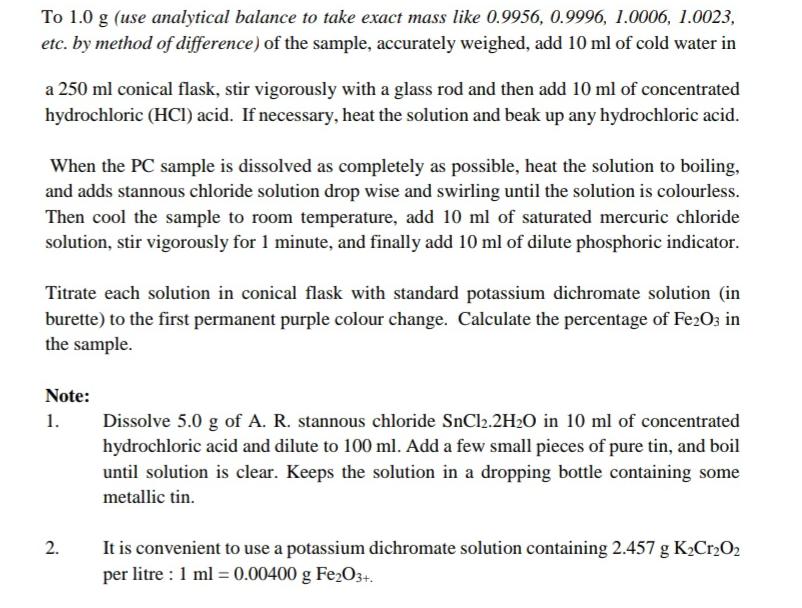Answered step by step
Verified Expert Solution
Question
1 Approved Answer
To 1.0 g (use analytical balance to take exact mass like 0.9956, 0.9996, 1.0006, 1.0023, etc. by method of difference) of the sample, accurately

To 1.0 g (use analytical balance to take exact mass like 0.9956, 0.9996, 1.0006, 1.0023, etc. by method of difference) of the sample, accurately weighed, add 10 ml of cold water in a 250 ml conical flask, stir vigorously with a glass rod and then add 10 ml of concentrated hydrochloric (HCI) acid. If necessary, heat the solution and beak up any hydrochloric acid. When the PC sample is dissolved as completely as possible, heat the solution to boiling, and adds stannous chloride solution drop wise and swirling until the solution is colourless. Then cool the sample to room temperature, add 10 ml of saturated mercuric chloride solution, stir vigorously for 1 minute, and finally add 10 ml of dilute phosphoric indicator. Titrate each solution in conical flask with standard potassium dichromate solution (in burette) to the first permanent purple colour change. Calculate the percentage of Fe2O3 in the sample. Note: 1. 2. Dissolve 5.0 g of A. R. stannous chloride SnCl2.2H2O in 10 ml of concentrated hydrochloric acid and dilute to 100 ml. Add a few small pieces of pure tin, and boil until solution is clear. Keeps the solution in a dropping bottle containing some metallic tin. It is convenient to use a potassium dichromate solution containing 2.457 g K2Cr2O2 per litre : 1 ml = 0.00400 g Fe2O3+.
Step by Step Solution
There are 3 Steps involved in it
Step: 1

Get Instant Access to Expert-Tailored Solutions
See step-by-step solutions with expert insights and AI powered tools for academic success
Step: 2

Step: 3

Ace Your Homework with AI
Get the answers you need in no time with our AI-driven, step-by-step assistance
Get Started


